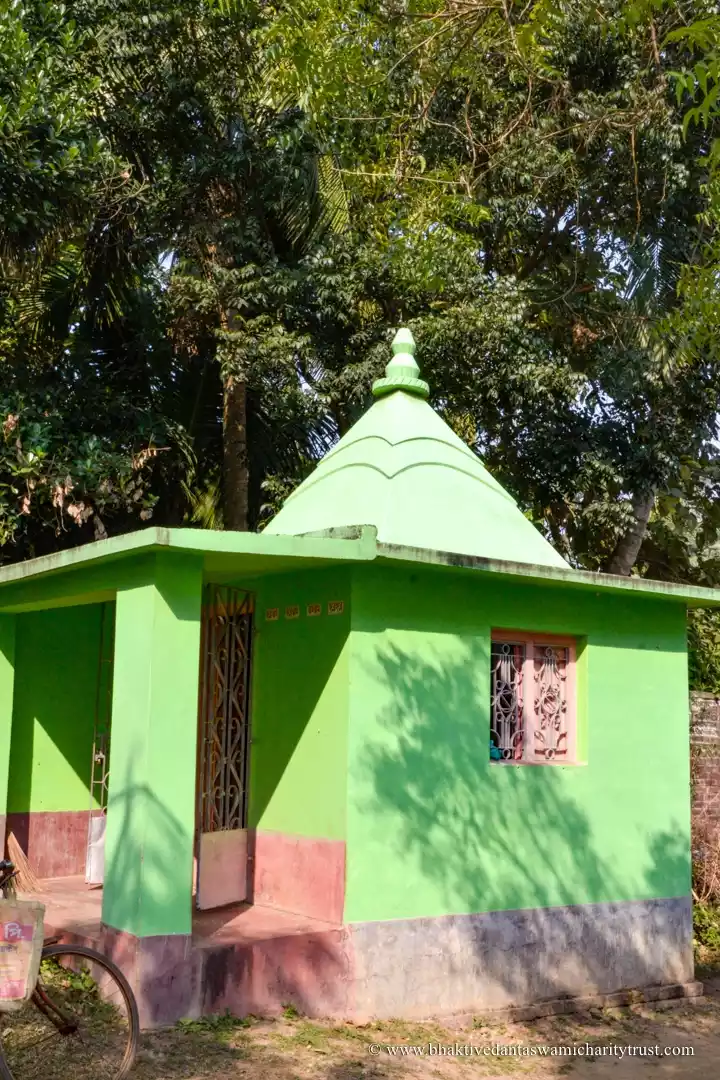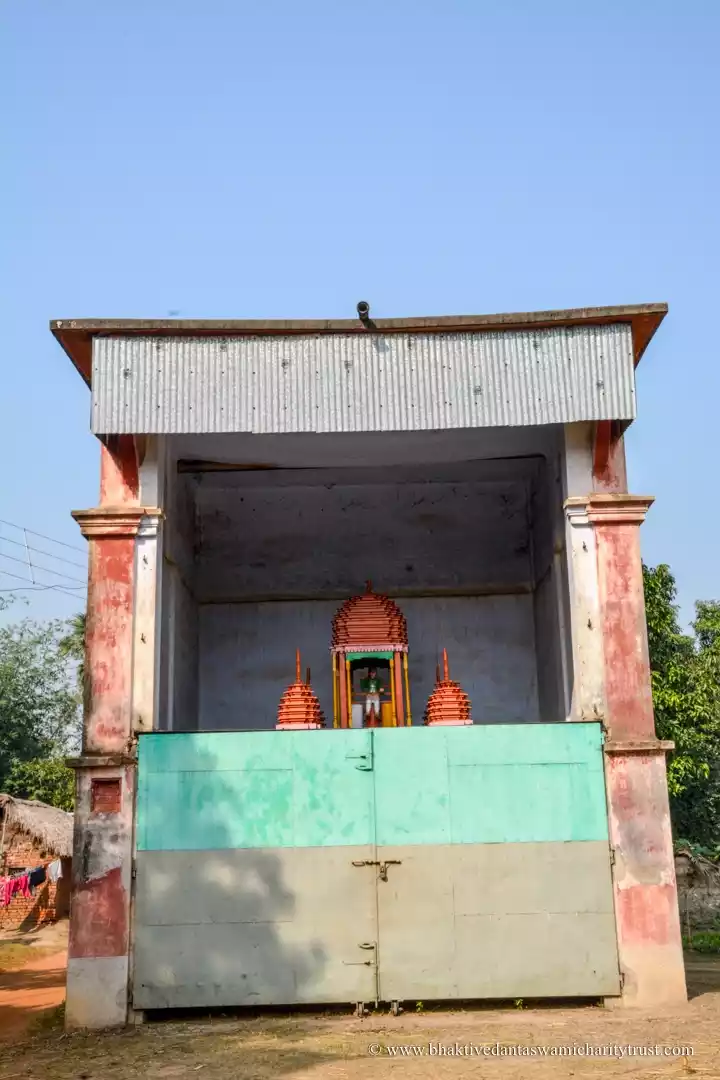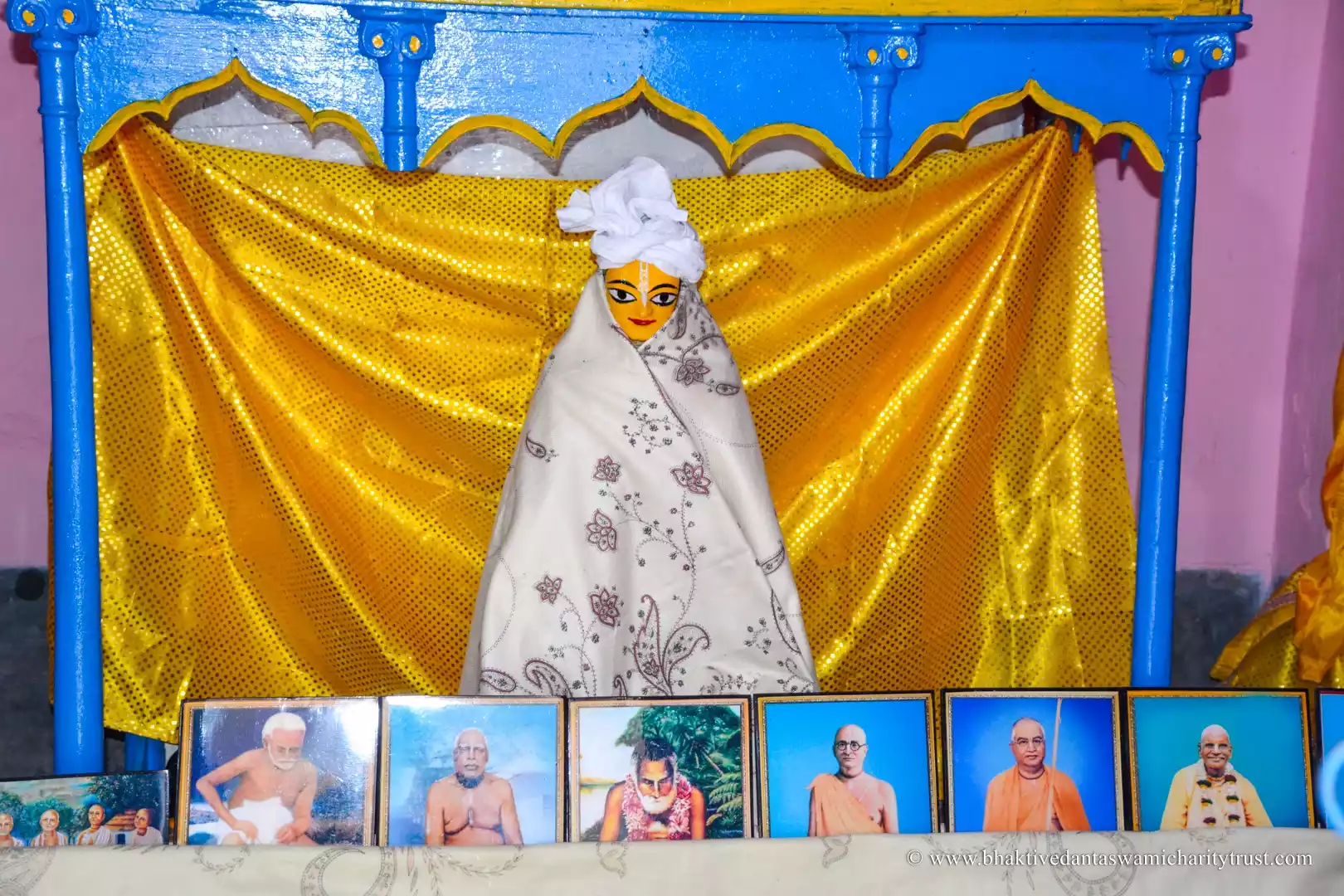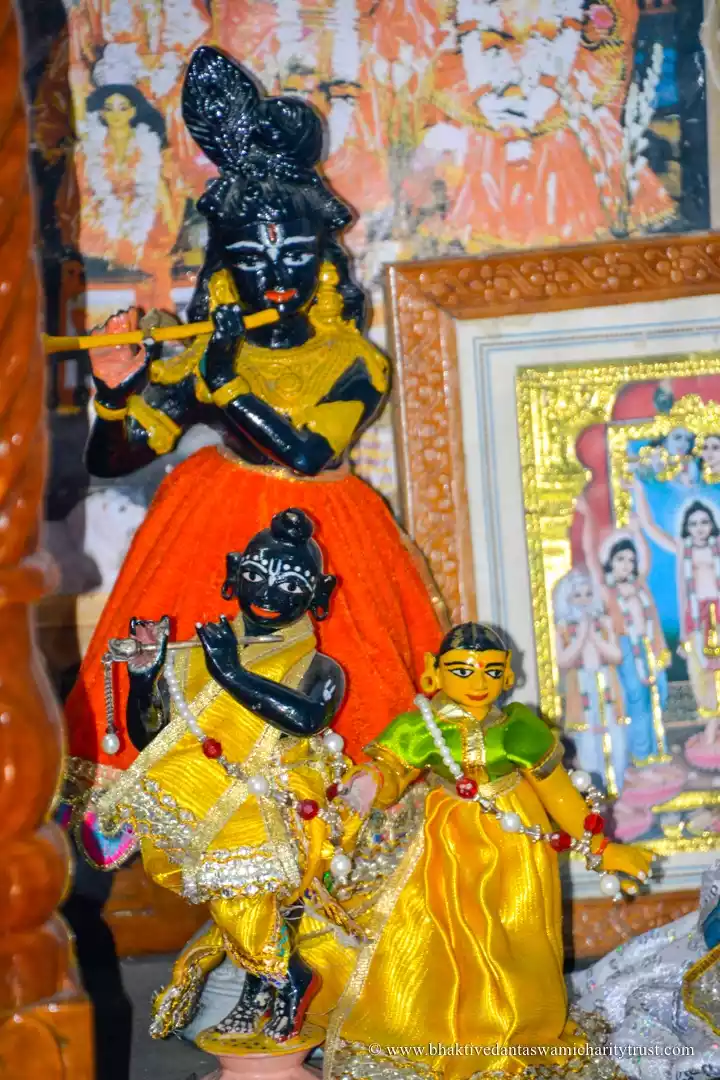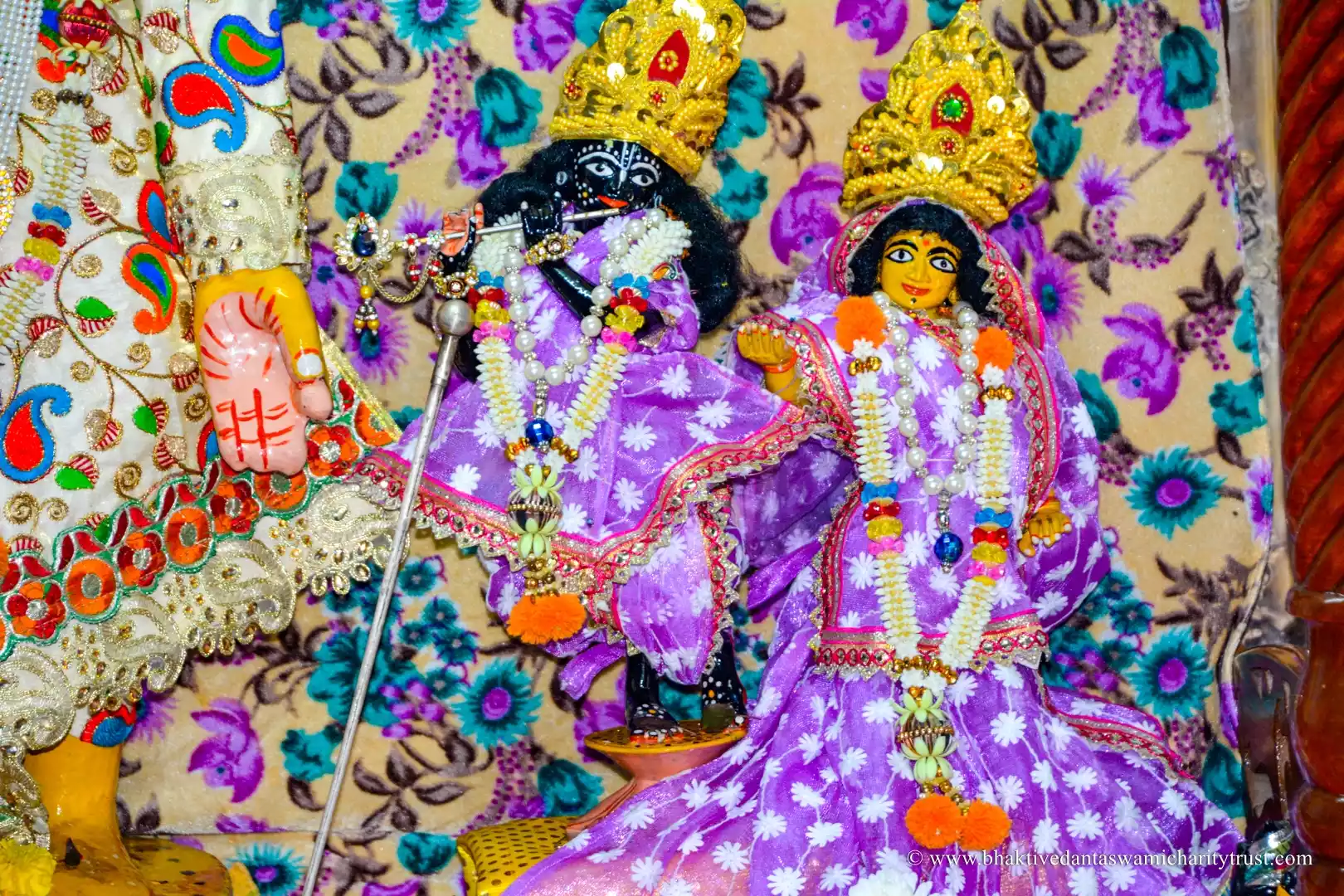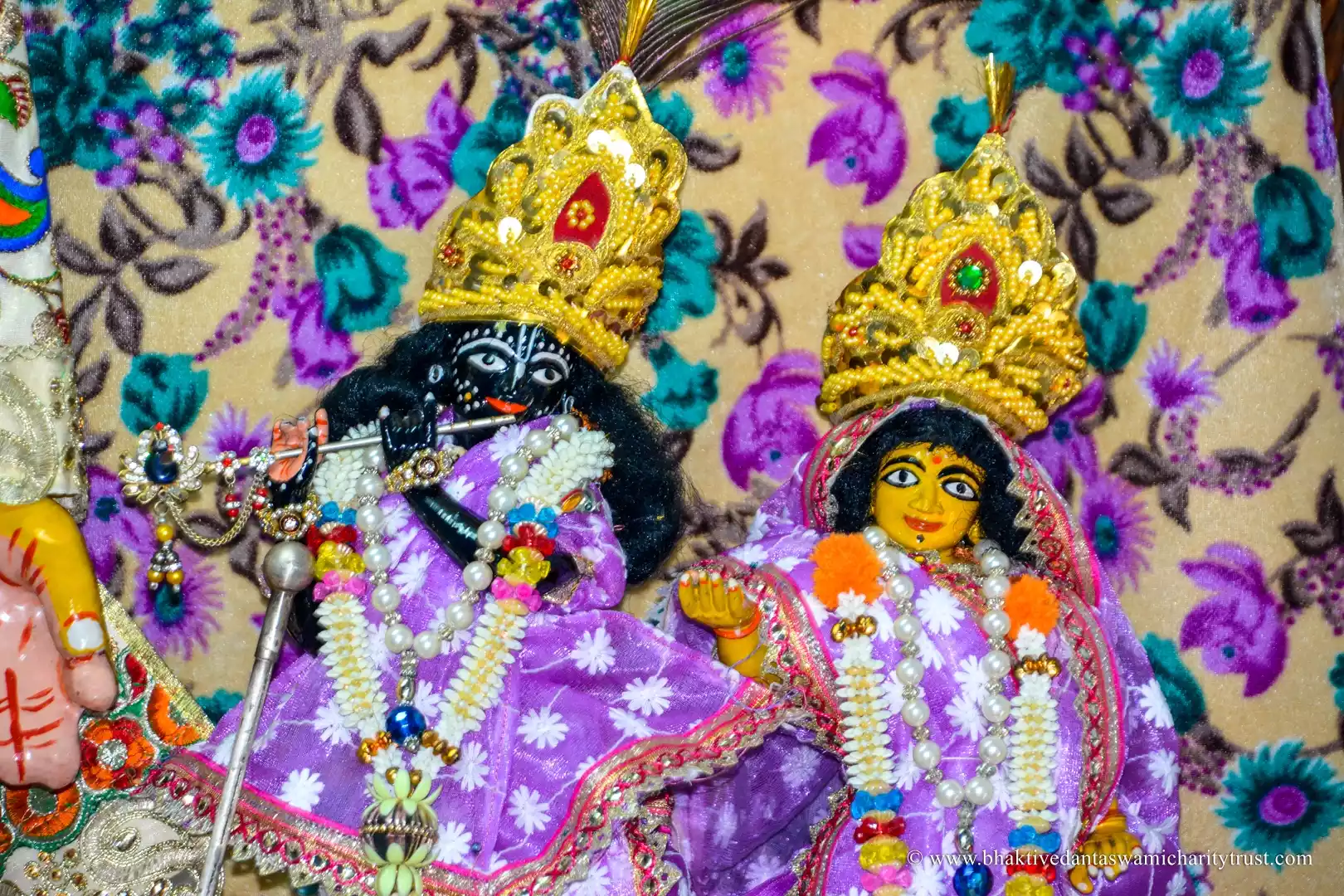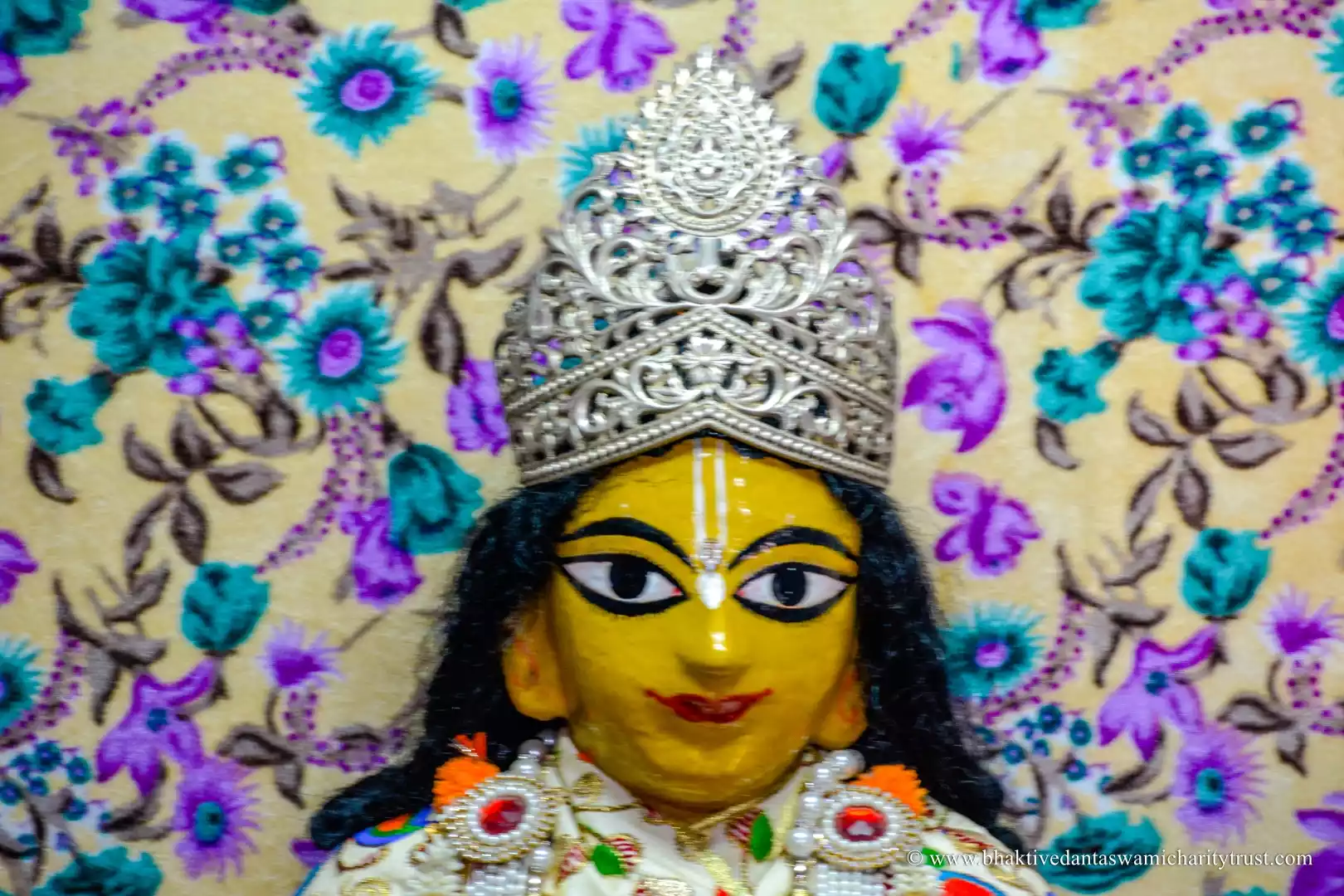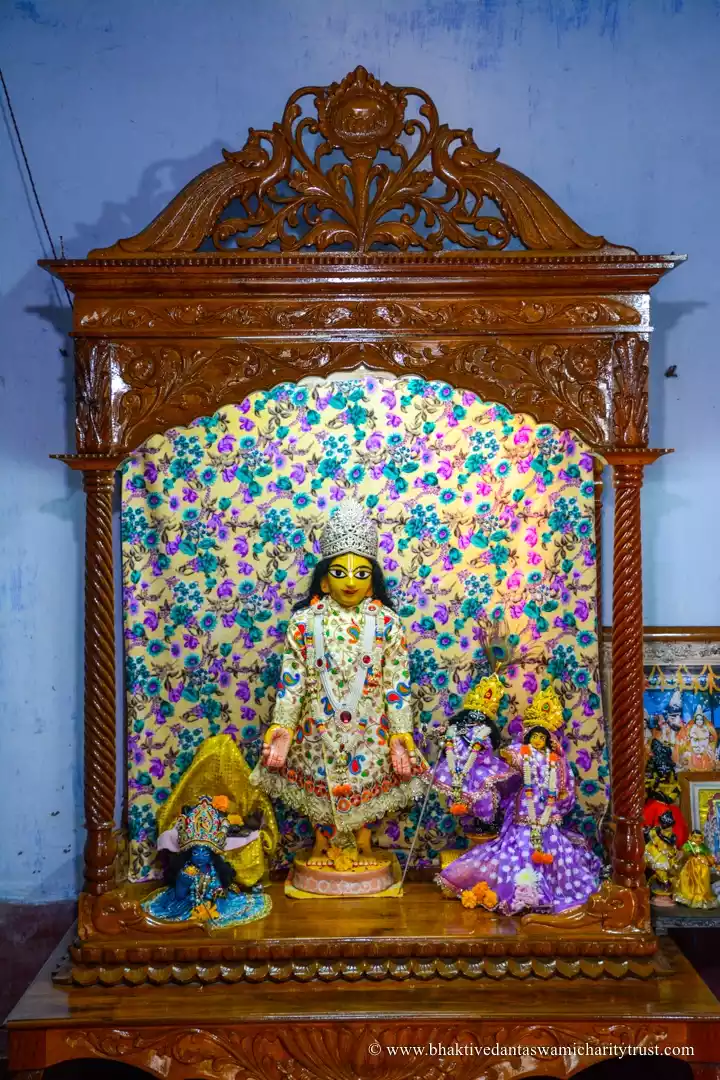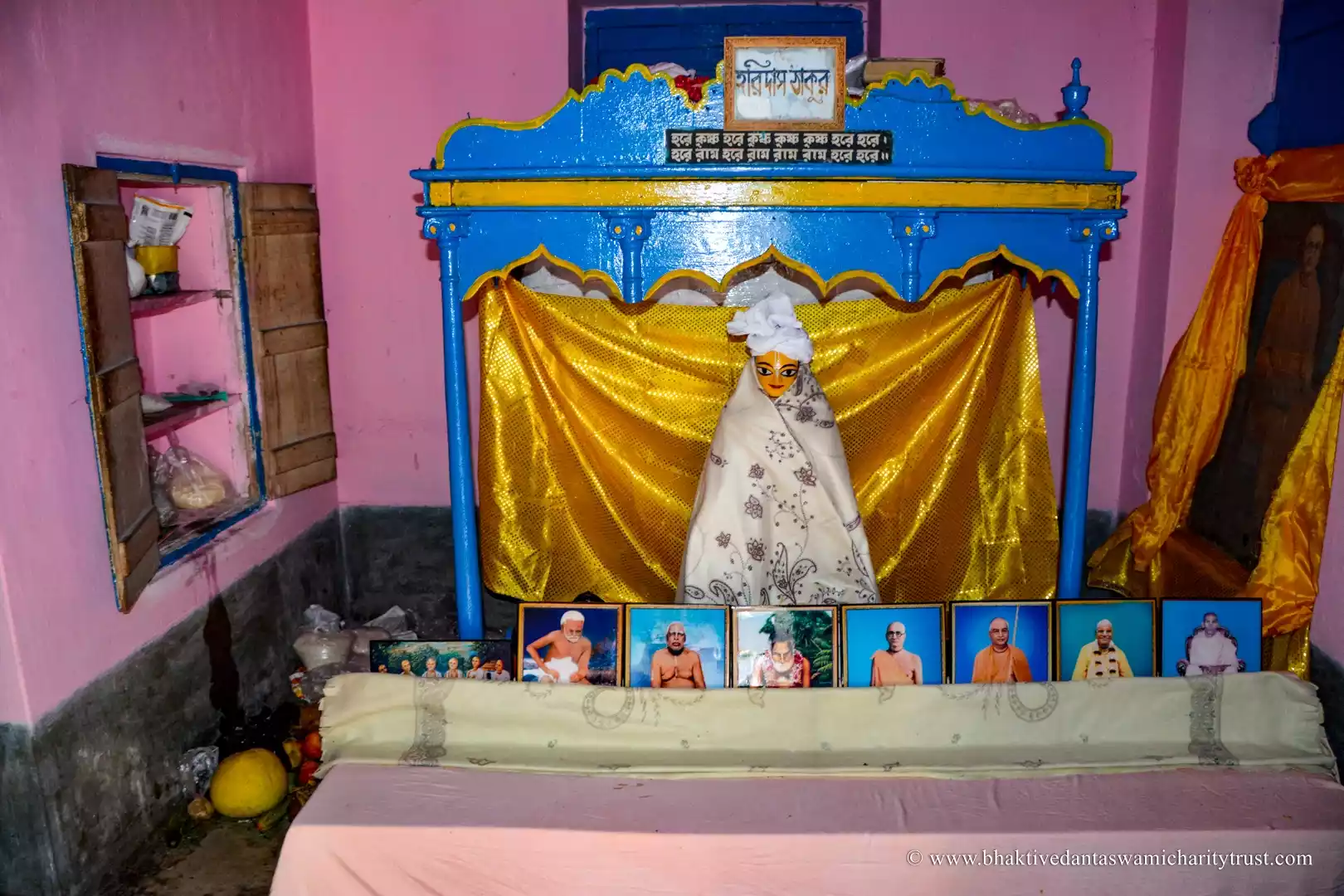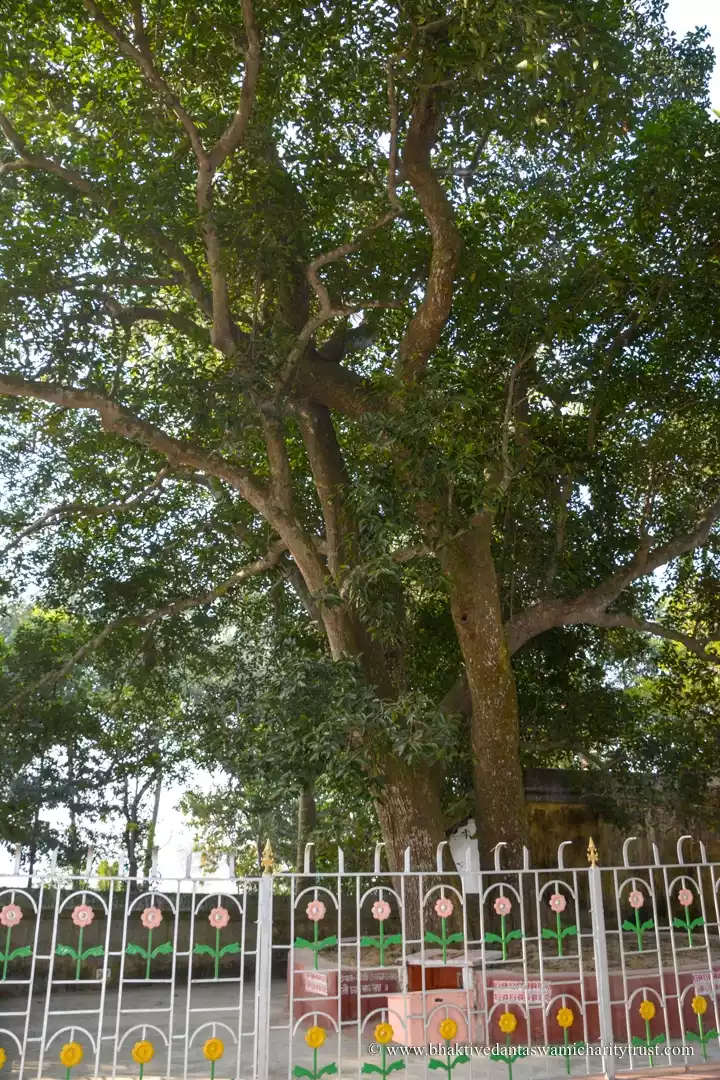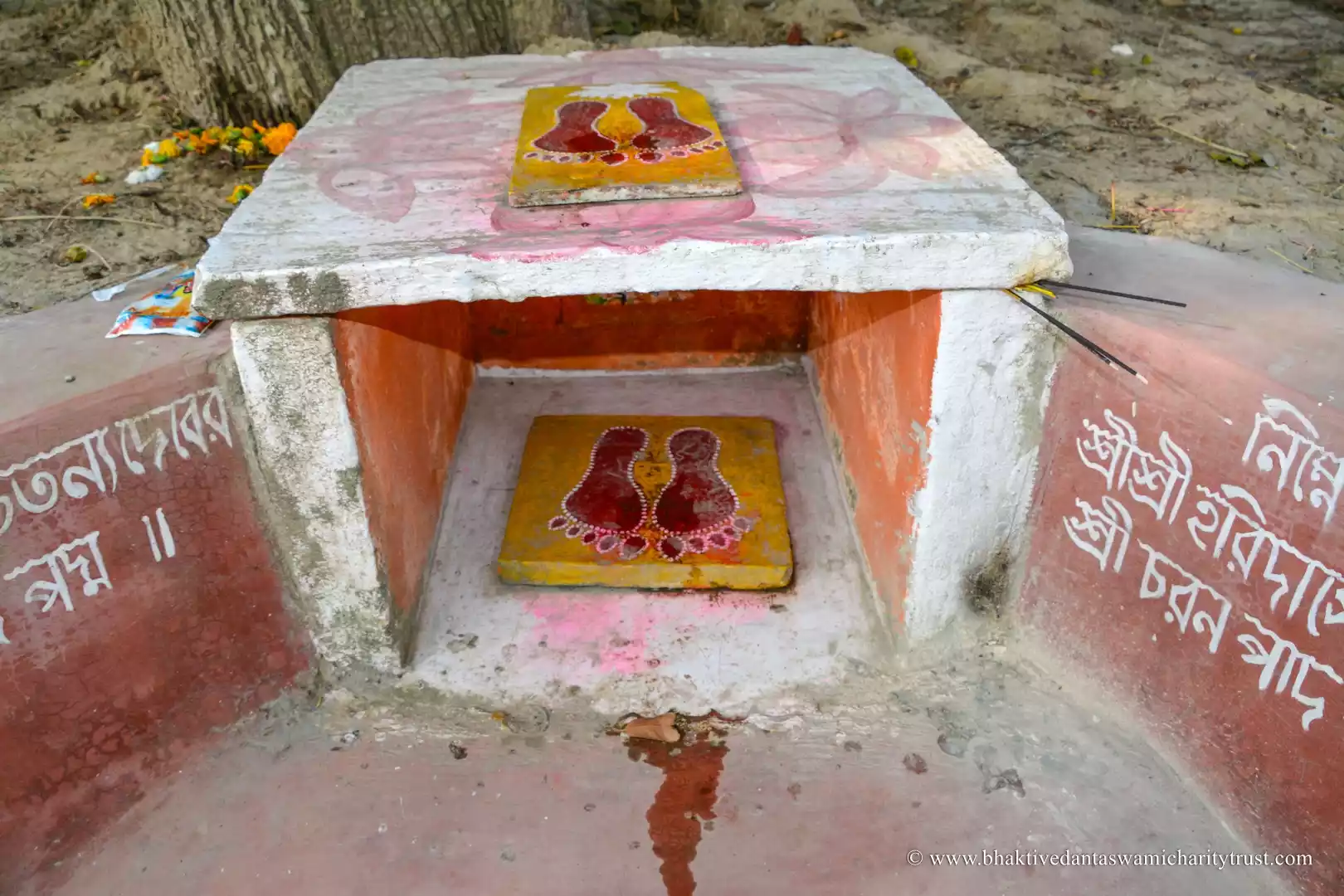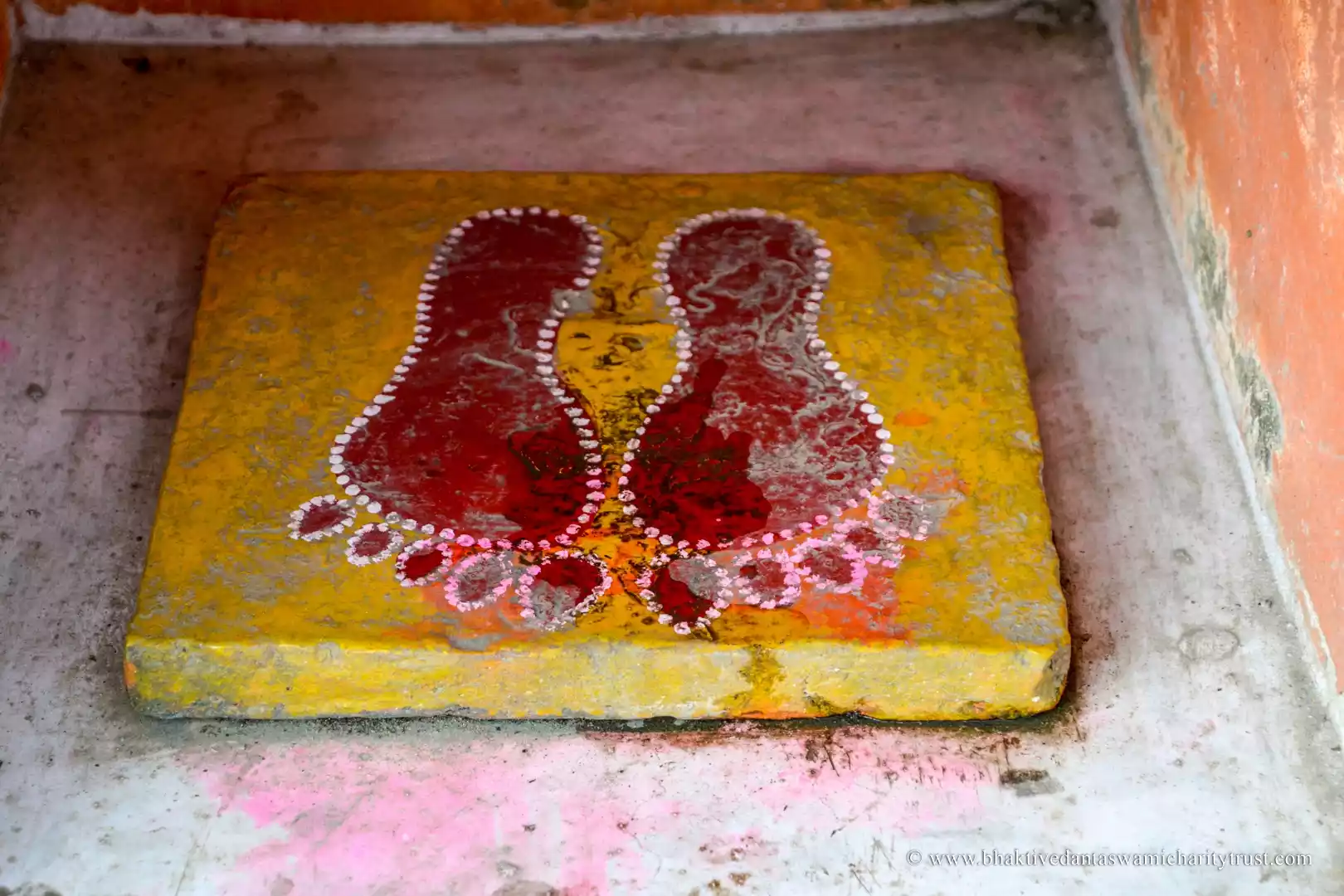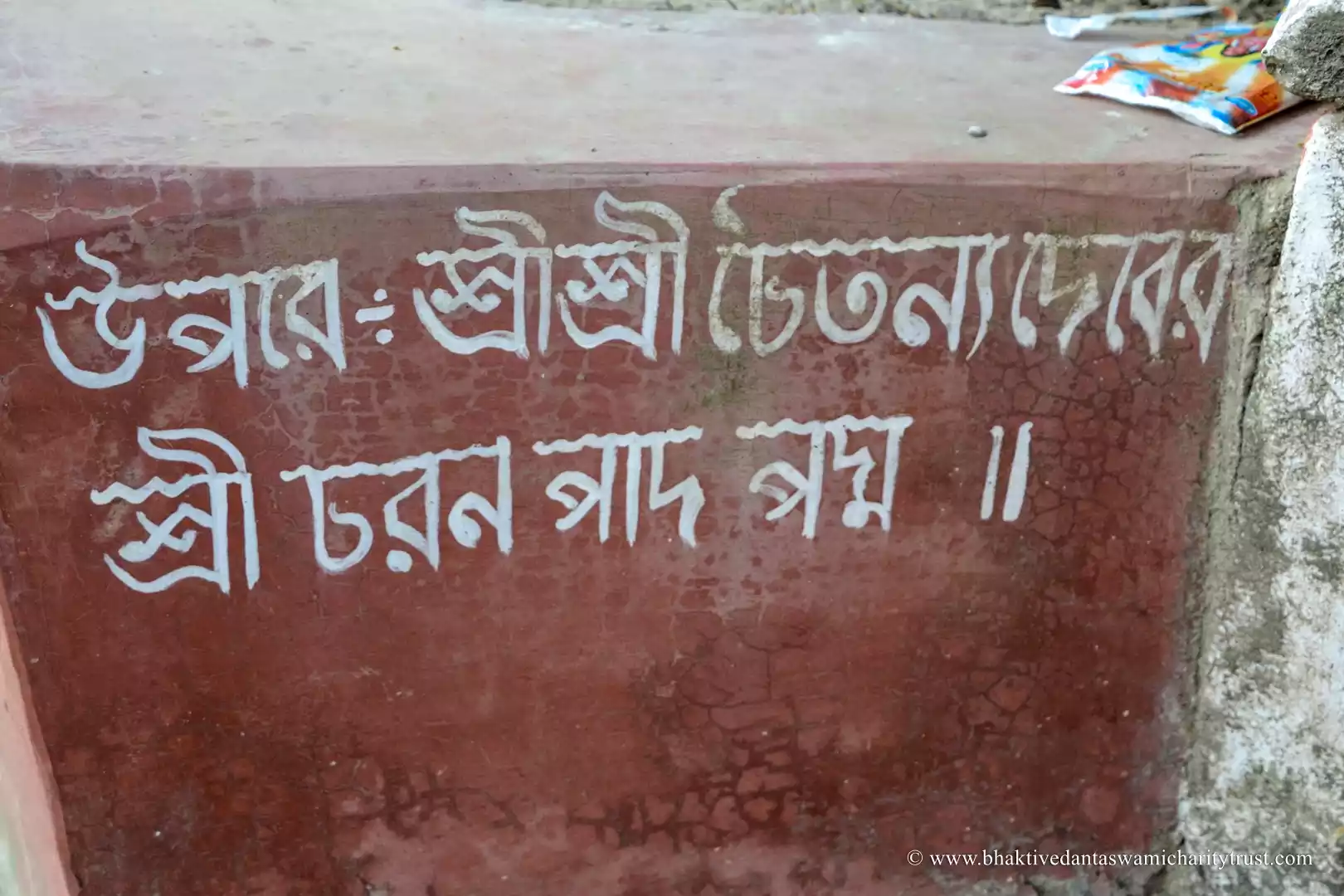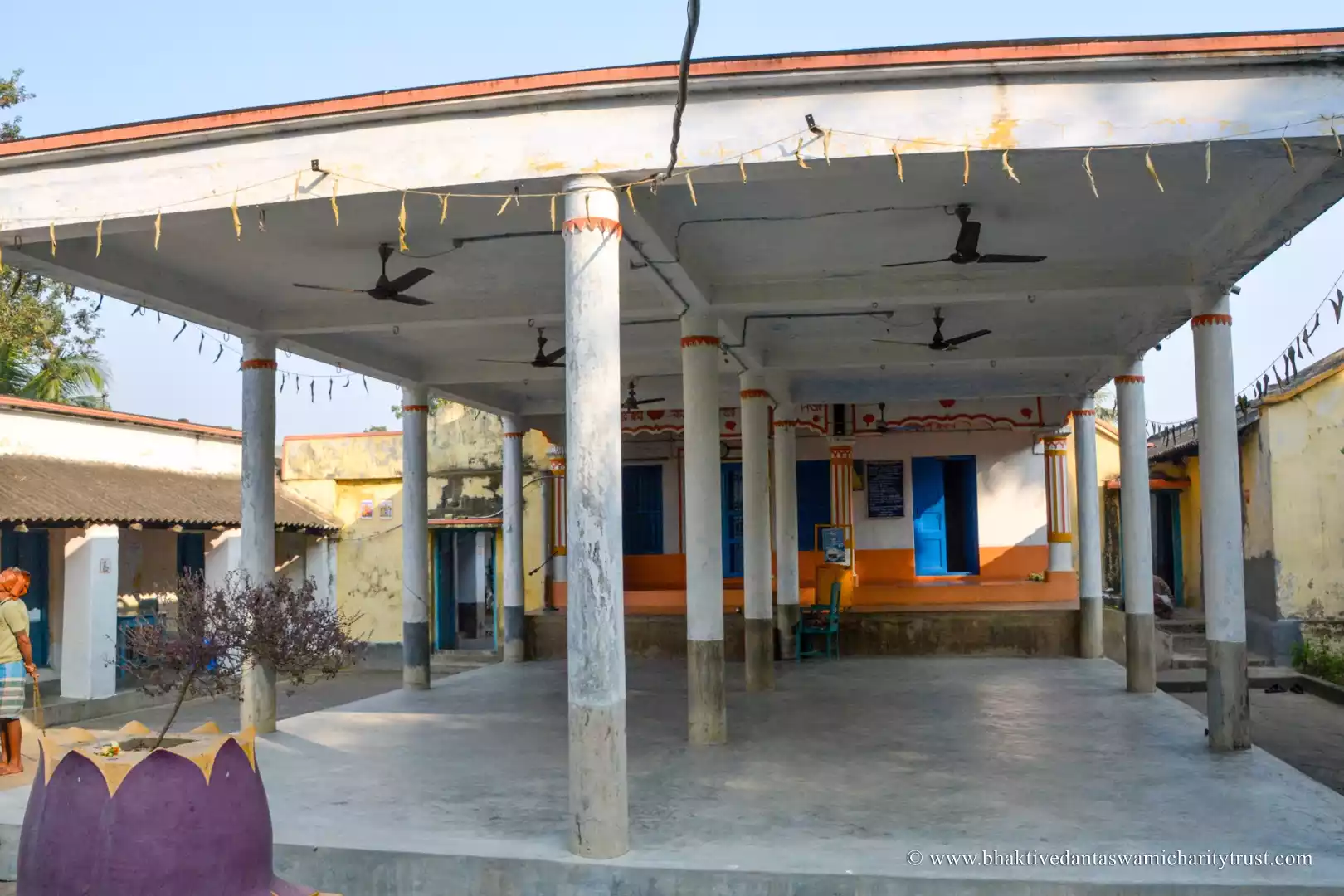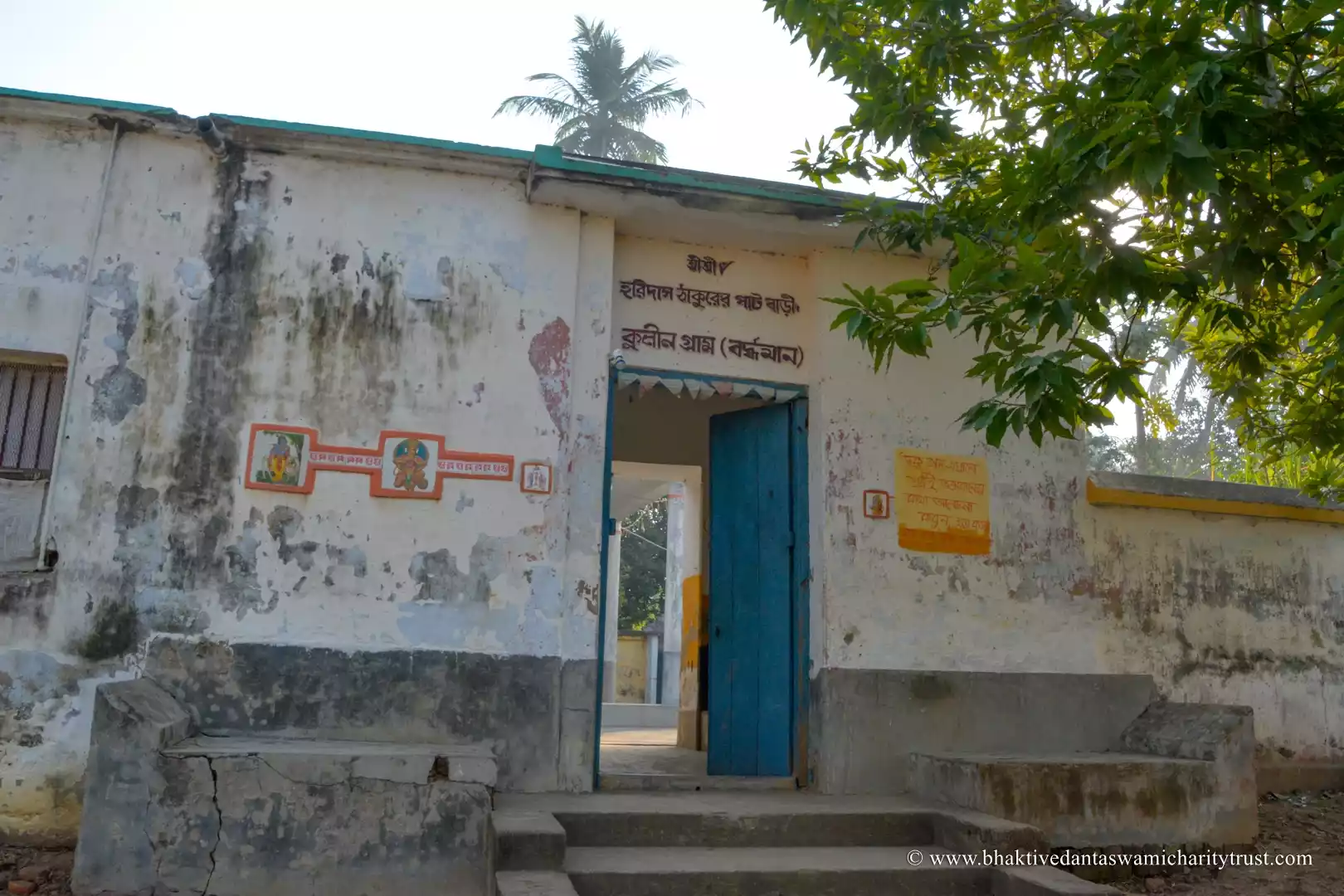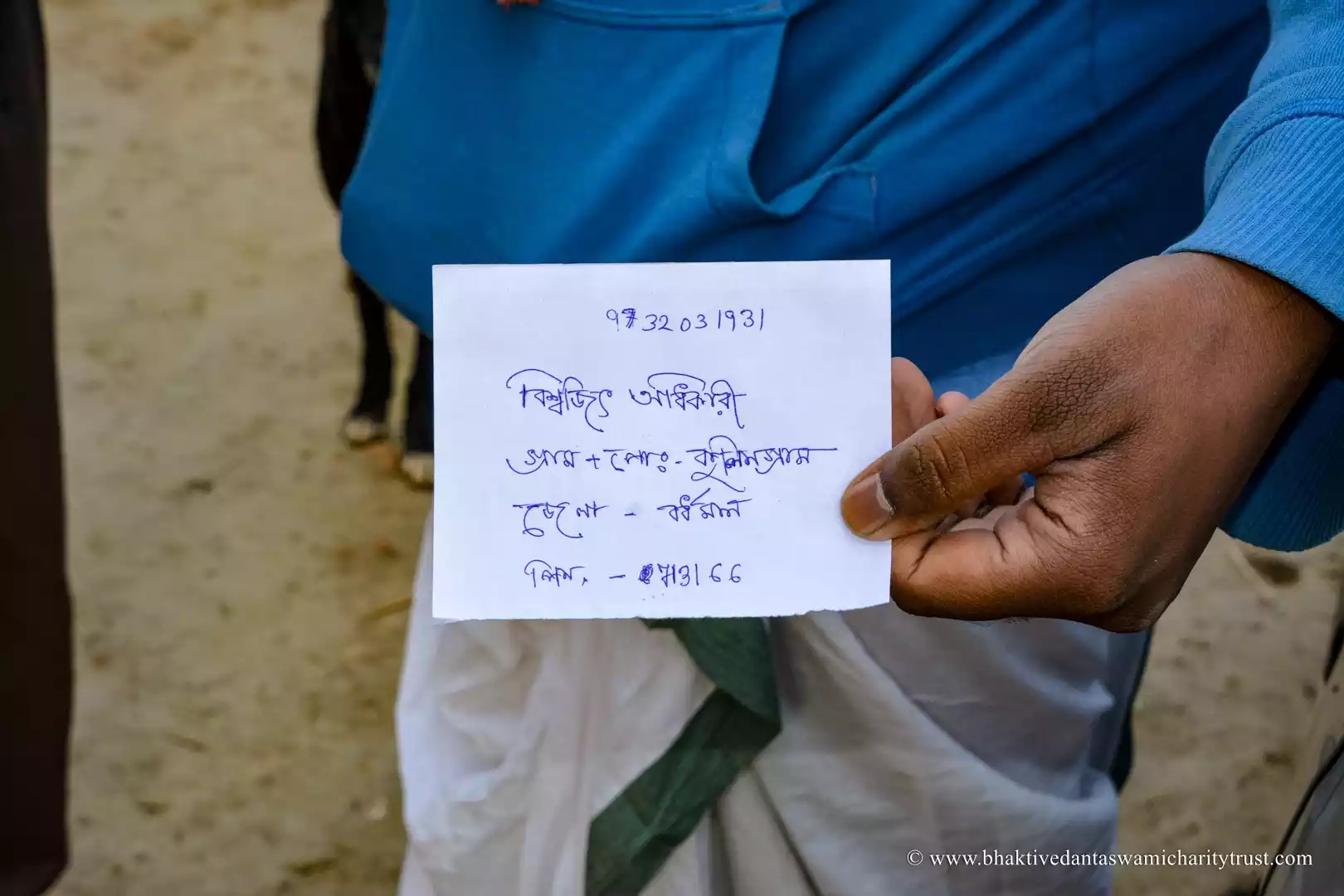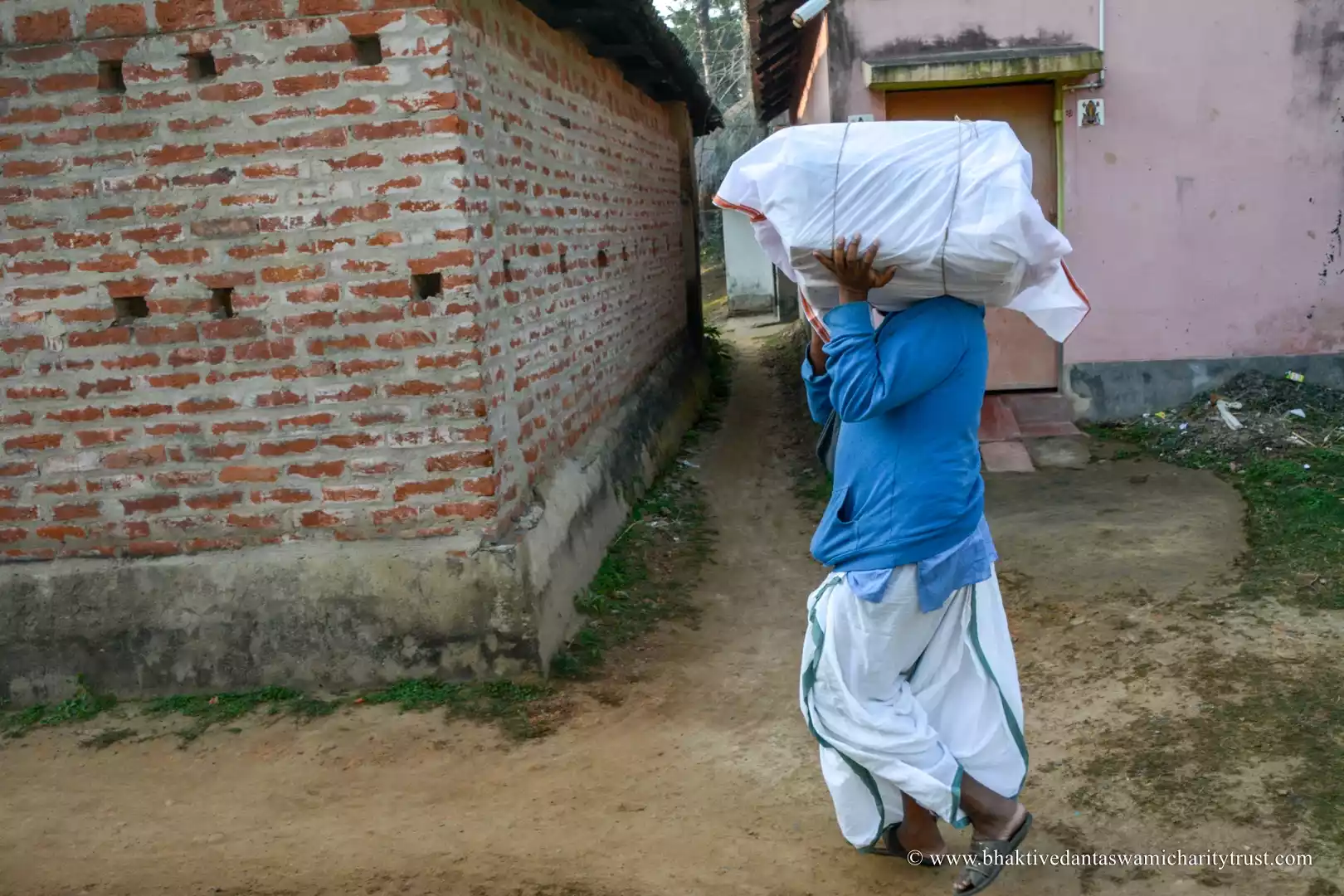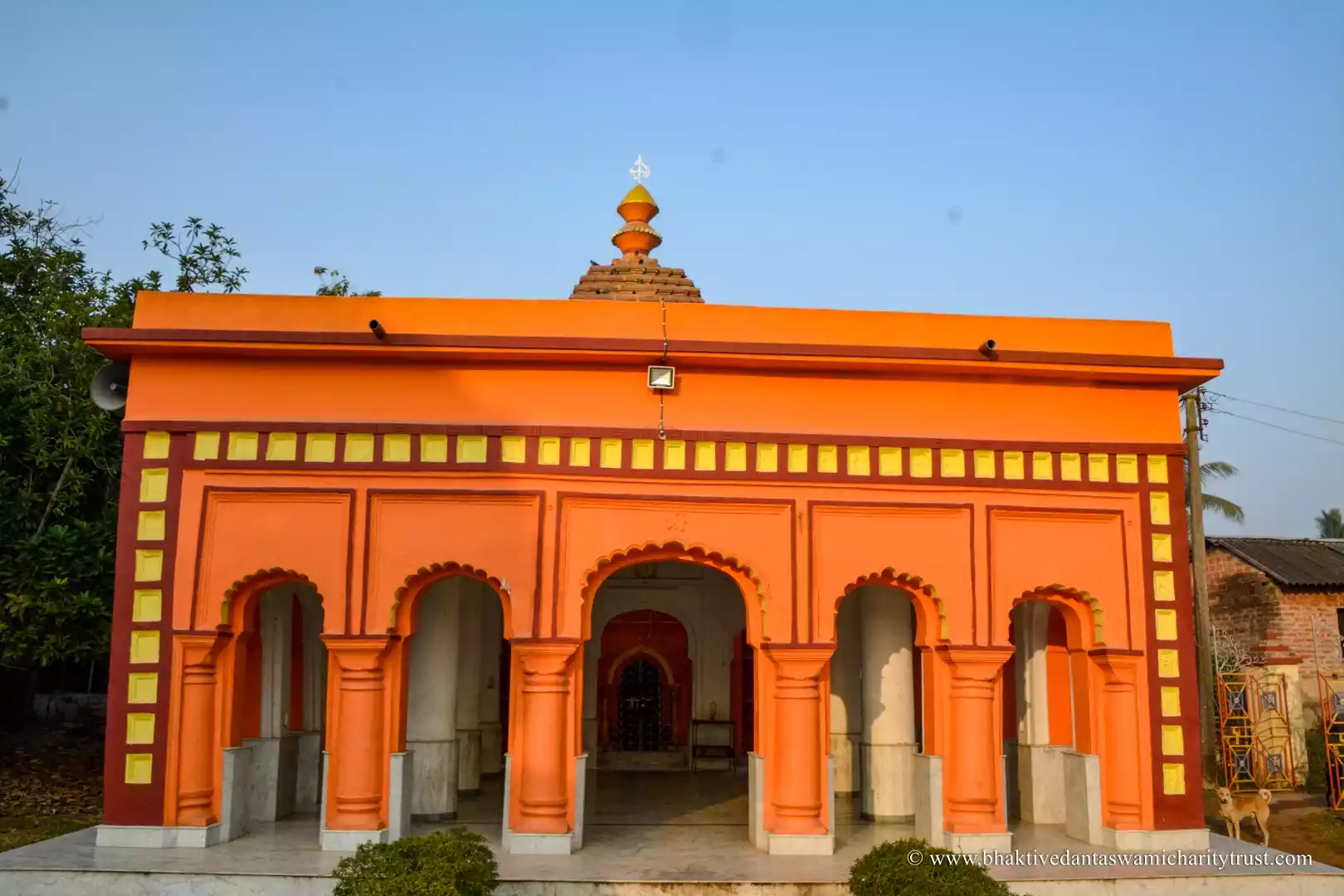Description
Śrīpāṭa of Guṇarāja Khāna, Satyarāja Khāna, Rāmānanda Vasu, Yadunātha, Puruṣottama, Śaṅkara, Vidyānanda and Vāṇīnātha Vasu
Kulīna Grāma is situated in the district of Bardhamān. Boarding a train from Howrāh to Bardhamān in chord line one should get down at Jaugrāma station. From there one can travel three kilometers to come to this Kulīna Grāma. Or else, through the same railway route one can get down at Memārī station. From there one can travel six kilometers by bus towards Jaugrāma to come to Rāṇāpāḍā and from there by van-rickshaw one can reach this Kulīna Grāma. Or, from Memārī one can come to the high road and from there by Trekker one can come straight to this Mahāpāṭa.
Kulīna Grāma is a great holy place for the Vaiṣṇavas. Innumerable associates of Gaurāṅga appeared in this Mahāpāṭa. The devotees’ glories of this place are unlimited. Guṇarāja Khāna, Satyarāja Khāna, Rāmānanda Vasu, Yadunātha, Puruṣottama, Śaṅkara, Vidyānanda, Vāṇīnātha Vasu and others are exceedingly famous personalities here. Satyarāja Khāna and Rāmānanda Vasu became the procurers of ‘Rope made with woven silk-cloth’ (Paṭṭa-daḍi) for Śrī Jagannāthadeva by the order of Śrīman Mahāprabhu. Since then every year they were going to Śrīkṣetra with Paṭṭa-daḍi during Ratha-yātrā. Rāmānanda Vasu is one of the writers of Vaiṣṇava-songs. Guṇarāja Khāna is the writer of a book named ‘Śrīkṛṣṇa Vijaya’. Śrīman Mahāprabhu, after reading this book, praised Kulīna Grāma as described in Śrī Caitanya-caritāmṛta (Madhya-līlā, 15/99-100)-
guṇarāja-khāṅna kaila ‘śrī-kṛṣṇa-vijaya’
tāhāṅ eka-vākya tāṅra āche premamaya
nandanandana kṛṣṇa-mora prāṇa-nātha
ei vākye vikāinu tāṅra vaṁśera hāta
As translated by Śrīla Prabhupāda- Guṇarāja Khān of Kulīna-grāma compiled a book named ‘Śrī Kṛṣṇa-vijaya’, in which there is a sentence revealing the author’s love of Kṛṣṇa. ‘Kṛṣṇa, the son of Nanda Mahārāja, is my life and soul.’ By this statement I am sold into the hands of the descendants of Guṇarāja Khān.
The glories of Kulīna Grāma have been described in Śrī Caitanya-caritāmṛta (Ādi-līlā, 10/80-83)-
kulīnagrāma-vāsī satyarāja rāmānanda
yadunātha puruṣottama śaṅkara vidyānanda
vāṇīnātha vasu ādi yata grāmī jana
sabei caitanya-bhṛtya caitanya-prāṇadhana
prabhu kahe kulīnagrāmera ye haya kukkura
sei mora priya anya jana rahu dūra
kulīna grāmīra bhāgya kahane nā yāya
śukara carāya ḍoma seha kṛṣṇa gāya
As translated by Śrīla Prabhupāda-Satyarāja, Rāmānanda, Yadunātha, Puruṣottama, Śaṅkara, and Vidyānanda all belonged to the twentieth branch. They were inhabitants of the village known as Kulīna-grāma. All the inhabitants of Kulīna-grāma village, headed by Vāṇīnātha Vasu, were servants of Lord Caitanya, who was their only life and wealth. The Lord said, ‘What to speak of others, even a dog in the village of Kulīna-grāma is My dear friend.’ No one can describe the fortu- nate position of Kulīna-grāma. It is so sublime that even sweepers who tend their hogs also chant the Hare Kṛṣṇa mahā-mantra.
Presently, many of the ancient cultural heritages of Kulīna-grāma have been lost. The birth place of Mālādhara Vasu is there just at the side of the road. A small pillar made with some bricks has been built there as a memento of this. There is a temple of Jagannātha which is known as Rathatalā. The temple is in a bad condition. The temple of Raghunātha has totally lost its beauty. Although, Rāma-Lakṣmana-Sītā-Hanumāna are worshiped but, it seems there is no gracefulness in the worship. Jagannātha-Baladeva-Subhadrā are present in Jagannāthadeva temple.
Presently, the place worthy of being seen in this Kulīna-grāma is the temple of Śrī Madana-Gopāla. Śrī Madana-Gopāla is present in the temple. On the left Śrī Rādhā and on the right Lalitādevī is situated. In front of the Madana-Gopāla temple there is a big pond known as Gopāla-dīghi. There are eight Śālagrāma- śilās inside the temple. Gopeśvara Śiva, who was said to be worshiped by Satyarāja Khāna, can be seen outside the temple on the right. The worship place of Śrīla Haridāsa Ṭhākura is situated at a distance of one and half kilometers from Gopeśvara Śiva temple which is now known as Ākharābāḍi. The worshipers of Caitanya Maṭha at Śrī Māyāpur accepted the responsibility of worshiping in this place. The worship of this temple looks very organized and lively. Śrīla Haridāsa Ṭhākura performed his devotional activities here for six months under a big bakula tree which is still maintained. Every year, on the full moon day of Agrahāyaṇa month (November-December), the arrival festival of Mahāprabhu is celebrated here.
The birth place of Rāmānanda Prabhu is not traceable, perhaps it is hidden. There is a small temple of Haridāsa Ṭhākura under that Bakula tree. The Deity of Haridāsa Ṭhākura is there inside the temple. In a temple opposite to this, a small Deity of Haridāsa Ṭhākura and the Deity of Śrīman Mahāprabhu are worshiped.




